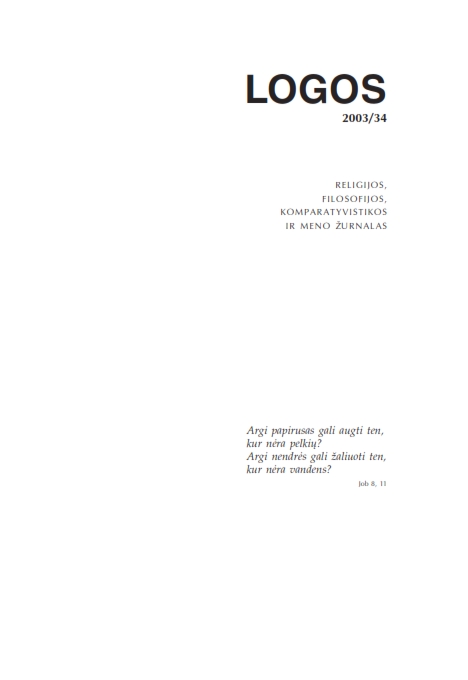Demoniškojo estetizmo pavidalai šiuolaikinėje Lietuvos kultūroje
The Main Features of Demonic Aestheticism in Lithuanian Culture
Author(s): Leonarda JekentaitėSubject(s): Fine Arts / Performing Arts, Aesthetics, Social Philosophy, Existentialism, Culture and social structure , Phenomenology
Published by: Visuomeninė organizacija »LOGOS«
Keywords: Demonism; aestheticism; existence; irony; depraved will; self-destruction;
Summary/Abstract: One of the most significant trends in postmodern Lithuanian art (the painter Š. Sauka, the writers S. Parulskis, S. Geda, A. Andriuškevičius, G. Radvilavičiûtë, G. Beresnevièius, the theatre director O. Koršunovas) can be characterised using Kierkegaardian terminology as demonic aestheticism. The essence of this phenomenon are: narcissism, existential irony and “debauched” self-will, always challenging and destroying all limits and taboos. The origin of their always extremely strong expression is their selfsacrificing devotion to their Art as to the only God and the same playful indifference to the discrepancies between fiction and reality, daydreams and nightmares. Their art is perfect professionally and full of deeply authentic suffering. The themes of angels, sin, crime and efforts to understand their attitude to God are always painful, cynical, and related to eroticism, perversion and death. The force of the expression arises from mental experiments in destruction and self-destruction which are signs of a longing for the traumatically lost sense of the certainty of reality and positive faith in God.
Journal: LOGOS - A Journal of Religion, Philosophy, Comparative Cultural Studies and Art
- Issue Year: 2003
- Issue No: 34
- Page Range: 165-179
- Page Count: 15
- Language: Lithuanian

